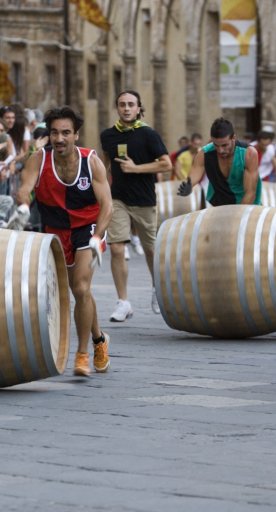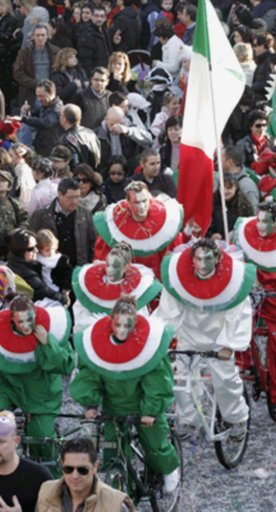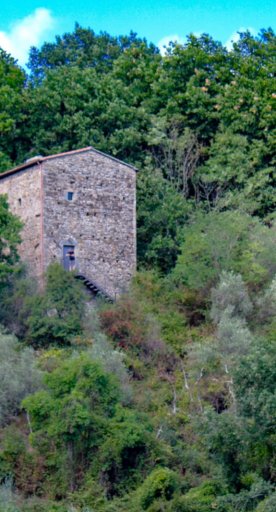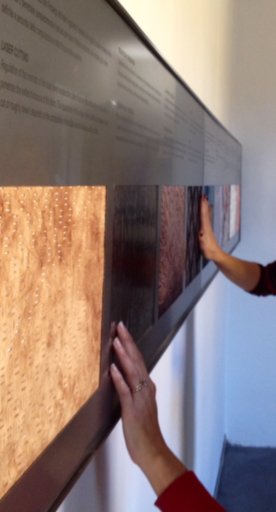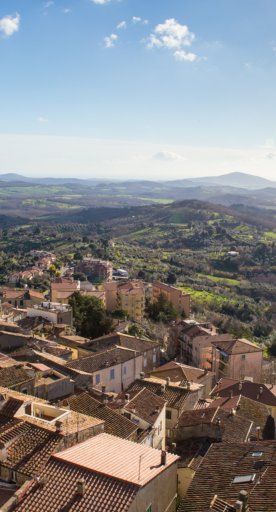Discover Anghiari's ancient monuments
Exploring one of the most scenic walled towns in Tuscany
-
1.Southern ramparts (‘del Vicario’)
-
2.San Martino Gate (Porta Vecchia or Old Gate)
-
3.Florentine Gate (Porta Nuova or New Gate)
-
4.Sant’Angelo Gate
-
5.The ancient via di Ronda
-
6.Sant’Agostino well
Southern ramparts (‘del Vicario’)

This part of the town wall dates back to when the rest of the town’s defences were reinforced. We know this from the records kept by Lorenzo Taglieschi (1598 – 1654). The ramparts on the eastern side were completed in 1571 by Filippo Spina Vicario. The ramparts are known as ‘del Vicario’ since the main access to them is from Palazzo Vicario, today known as Palazzo Pretorio, or the Town Hall.
San Martino Gate (Porta Vecchia or Old Gate)
This gate was built in 1204 when the second ring of walls was completed. San Martino Gate was the only access to the town from the north-west side. Today, there is a raised road that passes out of the gate where there used to be a ditch and drawbridge; the gate also used to go by the name of Porta del Fosso, or Ditch Gate. The gate opens out onto the town’s main square. In the gate, there is a place for the bell which used to be rung to mark the start and end of the market which has been held every Wednesday in the town since 1388 in piazza Baldaccio (also called Piazza del Mercatale).
Florentine Gate (Porta Nuova or New Gate)
This gate is made of a solid arch of stone blocks and has what remains of the Medici coat of arms carved in the keystone. Stone from Castello di Valialle donated by the Florentine Republic was used in the gate’s construction in 1460. Recent studies reveal that the gate was in fact built in the fourteenth century. The gate would have made what is now called via Garibaldi the main street of the town and would have created a new access point to Piazza del Mercatale.
Sant’Angelo Gate

This gate is an interesting Medieval solution to the problem of connecting two disjointed rings of walls. The internal one dates back to the thirteenth century and the other from the fourteenth century. Sant’Angelo Gate was the main entrance to the town until the fourteenth century when the town began to develop away from that area. There is a famous heroic-comic poem by Catorceide di Federigo Nomi, an illustrious local literary man in the seventeenth century, which tells the story of how the inhabitants of Borgo San Sepolcro came and stole the bolt from this gate.
The ancient via di Ronda
The ancient via di Ronda was a route in the northern part of the town walls. It was one of the main areas of the town’s development, demonstrated by the presence of the thirteenth century chapel of Sant’Antonio Abate, which sits perpendicular to the walls with its entrance on via di Ronda. From the fifteenth century on, this section of the town walls underwent a great deal of reconstruction in order to strengthen it against any possible attack. The Medieval chapel was completed by overlapping the fifteenth-century church of Sant’Agostino which leans against the walls with a system of buffers. When the walls were raised, the Medieval ramparts were incorporated and are still visible in some parts. The church of Sant’Agostino was enlarged in 1463 and this resulted in the construction of a unique semicircular tower with scarp walls and a double stone cordon. The tower was used as a grain storage barn when the convent was closed in 1820 and the whole building was turned into a farm. Today, visitors can climb the internal staircase to the top of the tower.
Sant’Agostino well

This fourteenth-century well was built by the Tarlati family in 1323 and is situated east of the church of Sant’Agostino. It was probably built to make use of a natural spring which came up near the base of the town walls. It’s possible to get to the well from Piazza del Borghetto, or from via de Ronda through an underground tunnel.











